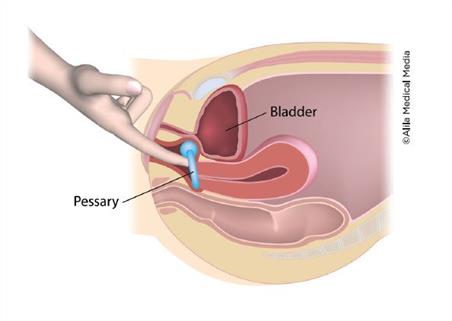 | |
About Vaginal Pessaries
A vaginal pessary is inserted into the vagina to support dropped pelvic organs and apply compression to the urethra during activities that can cause urine leakage. For many women, pessaries are a low risk treatment option for pelvic organ prolapse (POP) or urinary incontinence. They allow you to be comfortable and active without surgery. About 85 percent of women can be successfully fit with a pessary regardless of age, medical history, or extent of prolapsed pelvic organs.
Is s Pessary a good Option for you?
Not all women are able to wear a pessary.
Vaginal scarring, vaginal dryness, a surgically narrowed or shortened vagina, widened vaginal opening or very weak pelvic floor muscles are some reasons pessaries can fall out or be uncomfortable. Some of these problems can be
treated to allow for pessary use. Pessaries require ongoing care to avoid problems with vaginal discharge, odor, bleeding or ulceration. Often, you can easily do this after receiving teaching from your health care provider. A forgotten pessary can cause problems. For example, you can develop erosions through the vaginal wall into the bladder or rectum. About 50 to 80 percent of women successfully fitted with a pessary, use it on a long-term basis.
Consider wearing a pessary if you:
- Need temporary or long-term help with urine leakage during exercise.
- Have bothersome stress urinary incontinence (SUI) or POP symptoms and want a non-surgical treatment. Some women want to delay surgery and others want to avoid it completely-a pessary can help in both cases.
- Have health problems that make the risks of surgery too great.
- Are considering pregnancy in the future and need to postpone surgery until after you have completed your family.
- Take the time to remove, clean, and reinsert the pessary on a regular basis. This can be done by you at home or through regular visits to your health care provider.
For more information about Vaginal Pessaries download this PDF.
